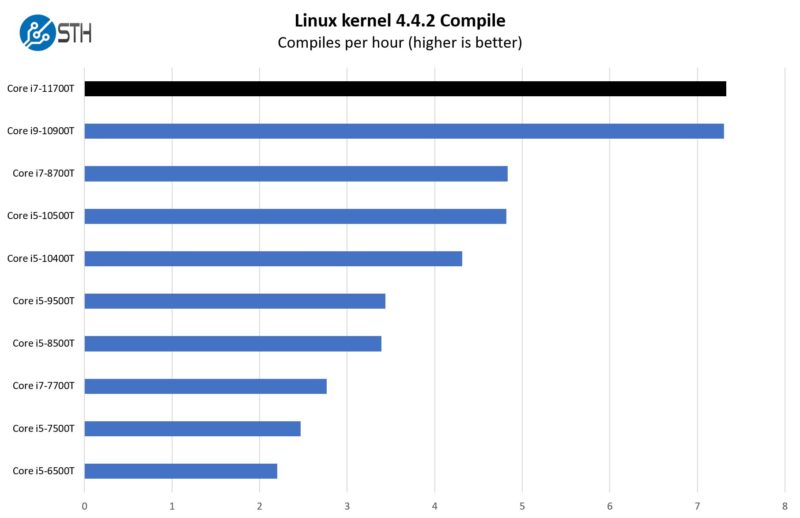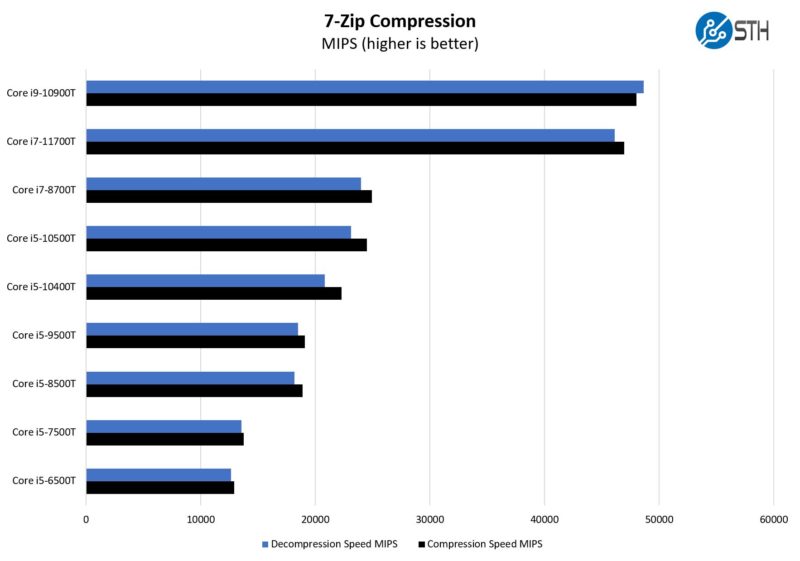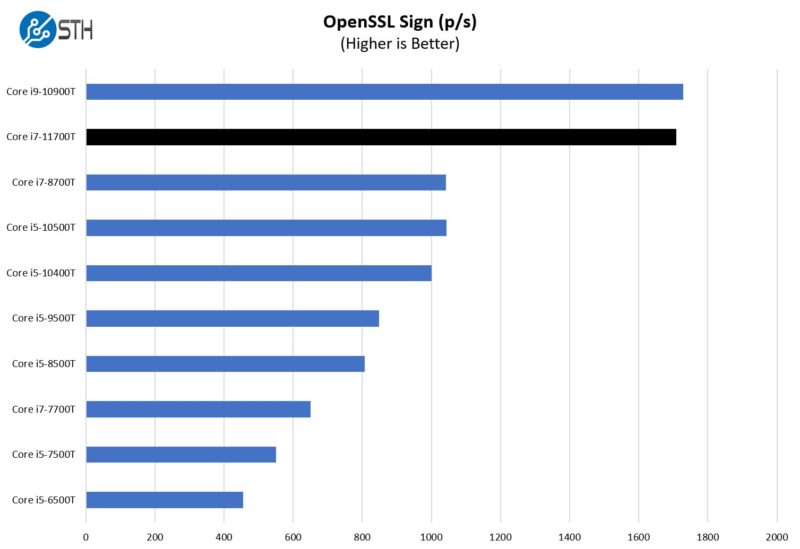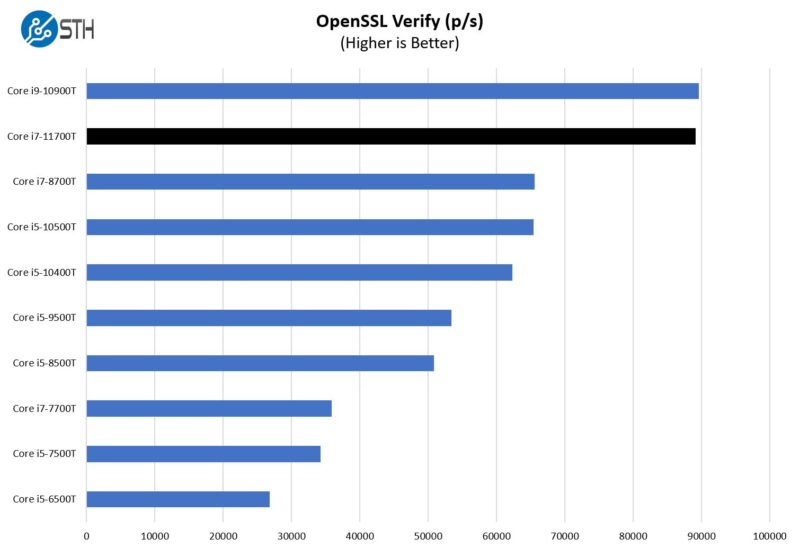Key Specs
Since many of our users are going to want to run different OSes on this, we wanted to give some of the key hardware specs. There is a lot on these machines that are customizable, but this at least gives you some sense of what hardware is available. If you want to know if your hardware is compatible with your OS, this list should help do that tie-out.
CPU Support
Here are the officially supported CPUs for the unit:
| Processor Name | Cores | Threads | Base Frequency | Max Frequency | Cache | Memory Support | Processor Graphics |
| Celeron G5905T | 2 | 2 | 3.3GHz | – | 4MB | DDR4-2666 | Intel UHD Graphics 610 |
| Celeron G5925 | 2 | 2 | 3.6GHz | – | 4MB | DDR4-2666 | Intel UHD Graphics 610 |
| Pentium Gold G6505T | 2 | 4 | 3.6GHz | – | 4MB | DDR4-2666 | Intel UHD Graphics 630 |
| Pentium Gold G6605 | 2 | 4 | 4.3GHz | – | 4MB | DDR4-2666 | Intel UHD Graphics 630 |
| Core i3-10105 | 4 | 8 | 3.7GHz | 4.4GHz | 6MB | DDR4-2666 | Intel UHD Graphics 630 |
| Core i3-10105T | 4 | 8 | 3.0GHz | 3.9GHz | 6MB | DDR4-2666 | Intel UHD Graphics 630 |
| Core i3-10305 | 4 | 8 | 3.8GHz | 4.5GHz | 8MB | DDR4-2666 | Intel UHD Graphics 630 |
| Core i3-10305T | 4 | 8 | 3.0GHz | 4.0GHz | 8MB | DDR4-2666 | Intel UHD Graphics 630 |
| Core i3-10325 | 4 | 8 | 3.9GHz | 4.7GHz | 8MB | DDR4-2666 | Intel UHD Graphics 630 |
| Core i5-11400 | 6 | 12 | 2.6GHz | 4.4GHz | 12MB | DDR4-3200 | Intel UHD Graphics 730 |
| Core i5-11400T | 6 | 12 | 1.3GHz | 3.7GHz | 12MB | DDR4-3200 | Intel UHD Graphics 730 |
| Core i5-11500 | 6 | 12 | 2.7GHz | 4.6GHz | 12MB | DDR4-3200 | Intel UHD Graphics 750 |
| Core i5-11500T | 6 | 12 | 1.5GHz | 3.9GHz | 12MB | DDR4-3200 | Intel UHD Graphics 750 |
| Core i5-11600 | 6 | 12 | 2.8GHz | 4.8GHz | 12MB | DDR4-3200 | Intel UHD Graphics 750 |
| Core i5-11600T | 6 | 12 | 1.7GHz | 4.1GHz | 12MB | DDR4-3200 | Intel UHD Graphics 750 |
| Core i7-11700 | 8 | 16 | 2.5GHz | 4.9GHz | 16MB | DDR4-3200 | Intel UHD Graphics 750 |
| Core i7-11700T | 8 | 16 | 1.4GHz | 4.6GHz | 16MB | DDR4-3200 | Intel UHD Graphics 750 |
| Core i9-11900 | 8 | 16 | 2.5GHz | 5.2GHz | 16MB | DDR4-3200 | Intel UHD Graphics 750 |
| Core i9-11900T | 8 | 16 | 1.5GHz | 4.9GHz | 16MB | DDR4-3200 | Intel UHD Graphics 750 |
Note here there are a lot of features like the DDR4-3200 support and PCIe Gen4 support that require certain 11th generation parts.
RAM Support
- Up to 2x 32GB DDR4 SODIMMs (64GB total) DDR4-3200/ 2933/ 2666 depending on the CPU used
Storage Support
- 2x M.2 slots for NVMe SSDs (one confirmed working at Gen4 speeds)
- 1x 2.5″ SATA
Networking (Wired)
- Intel i219-LM
WiFi Support (Optional)
- Intel Wi-Fi 6 AX201, 11ax 2×2 Wi-Fi + Bluetooth 5.2, Intel vPro technology support, M.2 Card
- Intel Wireless-AC 9560, 11ac Dual Band 2×2 Wi-Fi + Bluetooth 5.1, M.2 card
- Realtek RTL8822CE, 11ac Dual Band 2×2 Wi-Fi + Bluetooth 5.2, M.2 card
USB Ports
- 2x USB 3.2 Front (1x Type-A Gen2, 1x Type-C Gen2)
- 2x USB 3.2 Gen2 Rear (Type-A)
- 2x USB 3.2 Gen1 Rear (Type-A)
- Options for additional ports, as configured with a USB 3.2 Gen1 Type-C with DisplayPort)
OSes From Factory
- Windows 10 Home (64-bit)
- Windows 10 Pro (64-bit)
- Windows 10 IoT Enterprise
- Ubuntu Linux
- No OS
The OS section can be a big deal. Sometimes the units are advertised as supporting Windows 10, but one gets a Windows 10 Home license. If you want to, or may want to, run Windows 10 Pro, knowing exactly which OS is on the device is ultra important. Having Ubuntu Linux installed from the factory is nice since we know many of our readers will use these with Linux. We also had our system running Proxmox VE as a Linux virtualization node but that is not an officially supported OS. Ubuntu installed without issue. One also usually needs to make BIOS tweaks in order to run Linux on Lenovo machines since they are optimized for Windows, but the Ubuntu option is important here.
Note: These systems sometimes change specs mid-generation. If you find another spec sheet with items you think we should add, please let us know in the comments.
Next, we are going to look at the performance and power consumption before getting to our final words.
Lenovo ThinkCentre M90q Tiny Gen2 Performance and Power Consumption
Instead of going through the entire Linux-Bench test suite, we are going to show a few performance and power numbers here to give a general sense of performance. We actually planned to do storage testing, but then we realized that there was a huge variability in terms of what drives could be found in machines.
Python Linux 4.4.2 Kernel Compile Benchmark
This is one of the most requested benchmarks for STH over the past few years. The task was simple, we have a standard configuration file, the Linux 4.4.2 kernel from kernel.org, and make the standard auto-generated configuration utilizing every thread in the system. We are expressing results in terms of compiles per hour to make the results easier to read:

What was very interesting in these tests is that the Core i7-11700T and Core i9-10900T often end up trading top spots here. That is largely due to thermal throttling. The 10 core Core i9-10900T tends to throttle but has more resources. Sometimes, the single-threaded performance of the Core i7-11700T, even if only for a portion of a workload, means it is doing well.
7-zip Compression Performance
7-zip is a widely used compression/ decompression program that works cross-platform. We started using the program during our early days with Windows testing. It is now part of Linux-Bench.

Here simply adding cores had a big impact on performance. We get a nice uplift here just by adding more cores at higher clock speeds.
OpenSSL Performance
OpenSSL is widely used to secure communications between servers. This is an important protocol in many server stacks. We first look at our sign tests:

Here are the verify results:

Again, we saw some surprising results here putting out significantly more performance than the Core i7-8700T and just below the Core i9-10900T.
Next, we are going to take a look at power consumption before getting to our key lessons learned and final words.




Can you test if it supports PCIe bifurcation so user could add pcie riser and there m.2 adapter with 2 or 4 extra NVMe m.2 slots.
Next question would be if combination would work thermally.
With over 35 mini-micro systems, do you have a rack mount solution? Could so many stacked into a rack with their associated power supplies be a fire hazard?
Are any of these tiny systems you’ve looked at something you’d like for a Pfsense box with 10GBE inter-VLAN routing on the LAN side and 1 gigabit VPN/filtering on the WAN side?
Tyler – have a HP machine next that will be good for something like this.
The Gen 2 M90q only has PCIe 3.0 storage. PCIe4.0 came with the Gen3 M90q.